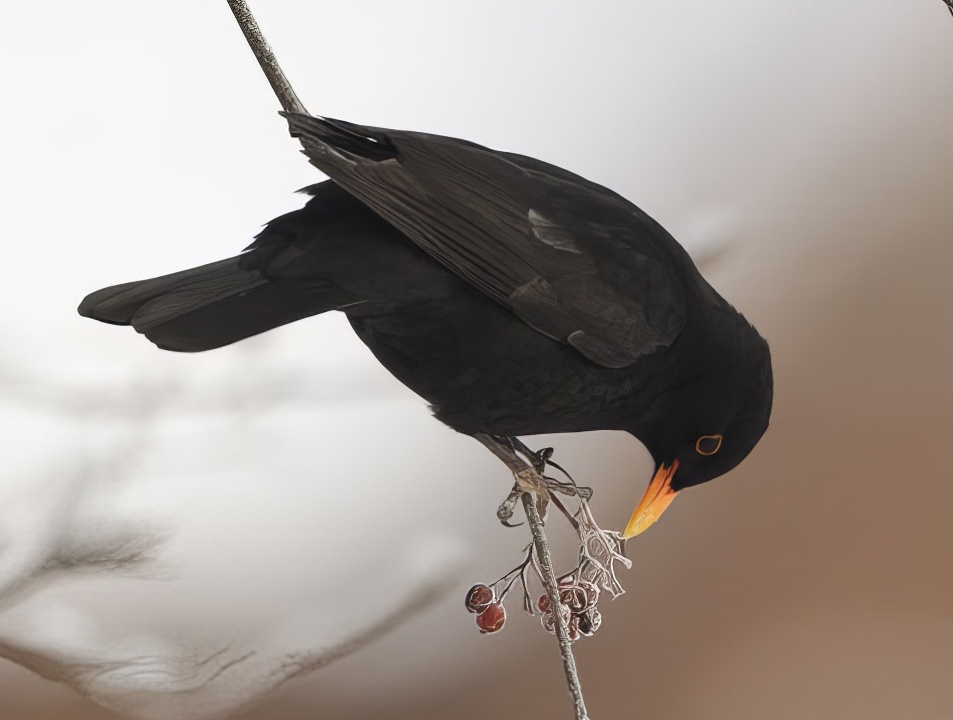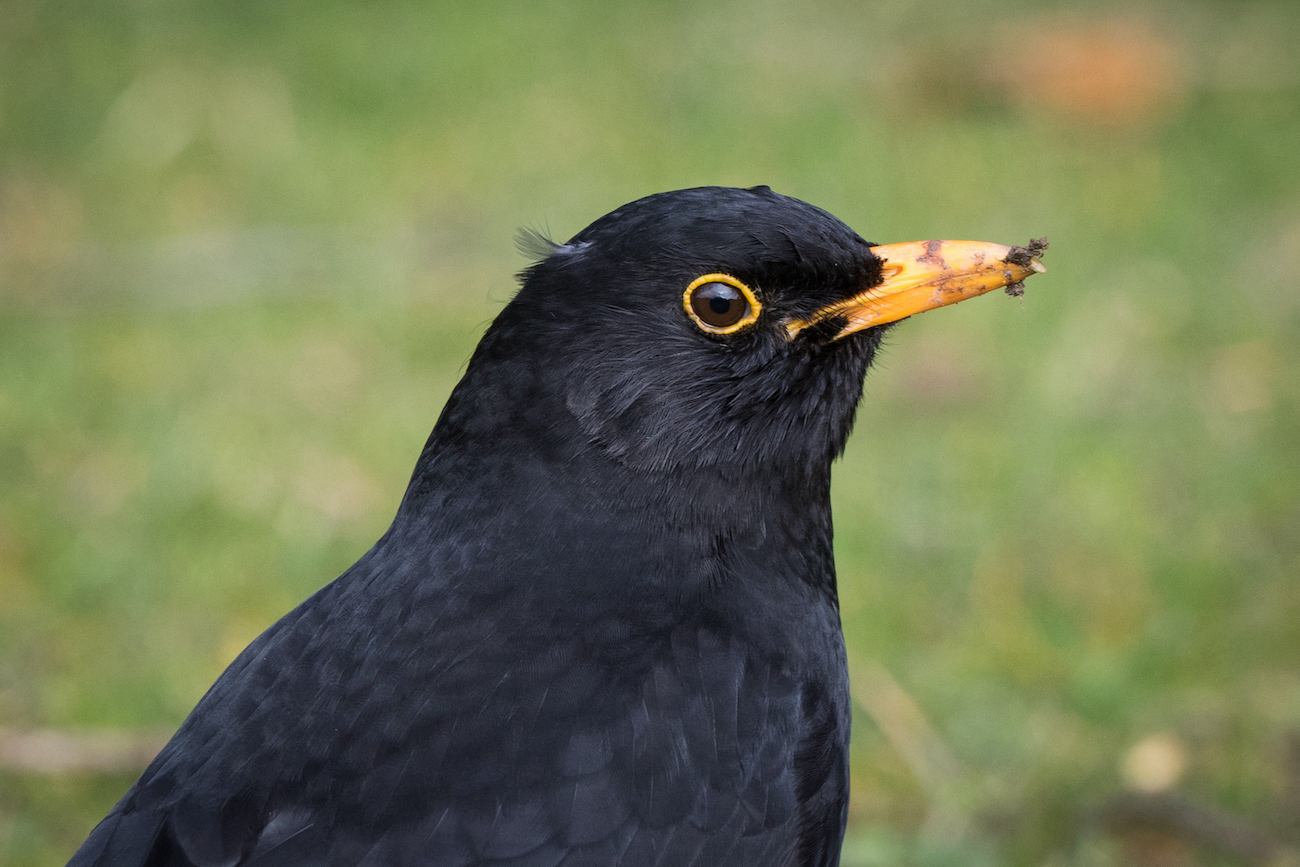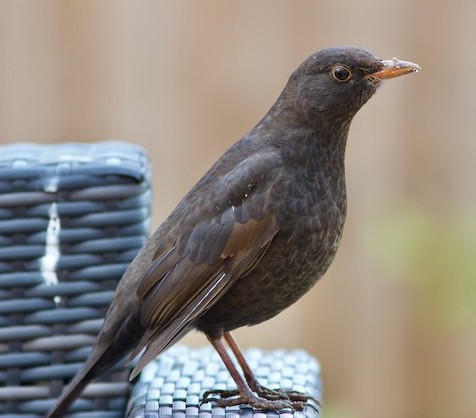Blackbird Turdus merula
Very common resident, passage migrant and winter visitor.



Blackbirds: left, at Barton upon Humber December 19th 2010 (Graham Catley); centre, Louth March 7th 2018 (John Clarkson); right, Legbourne January 6th 2021 (Paul Hyde)
One of our top three commonest birds. Not quite found everywhere, but near enough. The Atlas estimated the Lincolnshire breeding population at 200,000 pairs in the late 1980s and it probaby remains around this level. BBS data suggests a 10% increase in the breeding population of this species from 1994–2018 but the increase is not statistically significant. Every winter the population is boosted by wintering individuals from the north European population and significant falls of migrating birds can occur along the coast in October and November. One such influx occurred in thee autumn of 1961 when massive immigration occurred along the east coast, November 5th. At Low Farm Tetney, c.4,000 poured in and flocks of 50-100 arrived at North Coates from direction of Spurn Point. Large numbers were on the coast from Sandilands-Gibraltar Point, and an estimated 100,000 arrived at Gibraltar Point, where 858 were caught and ringed; this brought the total ringed during 1961 to 1,070. Next day, Hendale Wood, Limber, was “alive with blackbirds” and 250 were counted on two adjacent fields and there were large numbers counted at Lindum cricket ground on 6th. An unprecented event. BTO ringing data shows that incoming birds in autumn come from the Low Countries, eastern Europe including Russia and Scandinavia. Those ringed in Lincolnshire have been recovered in the same range of countries, with one or two showing hard weather movements to the south to countries such as Portugal (where they may get shot).
(Account as per new Birds of Lincolnshire (2021), included December 2022)
